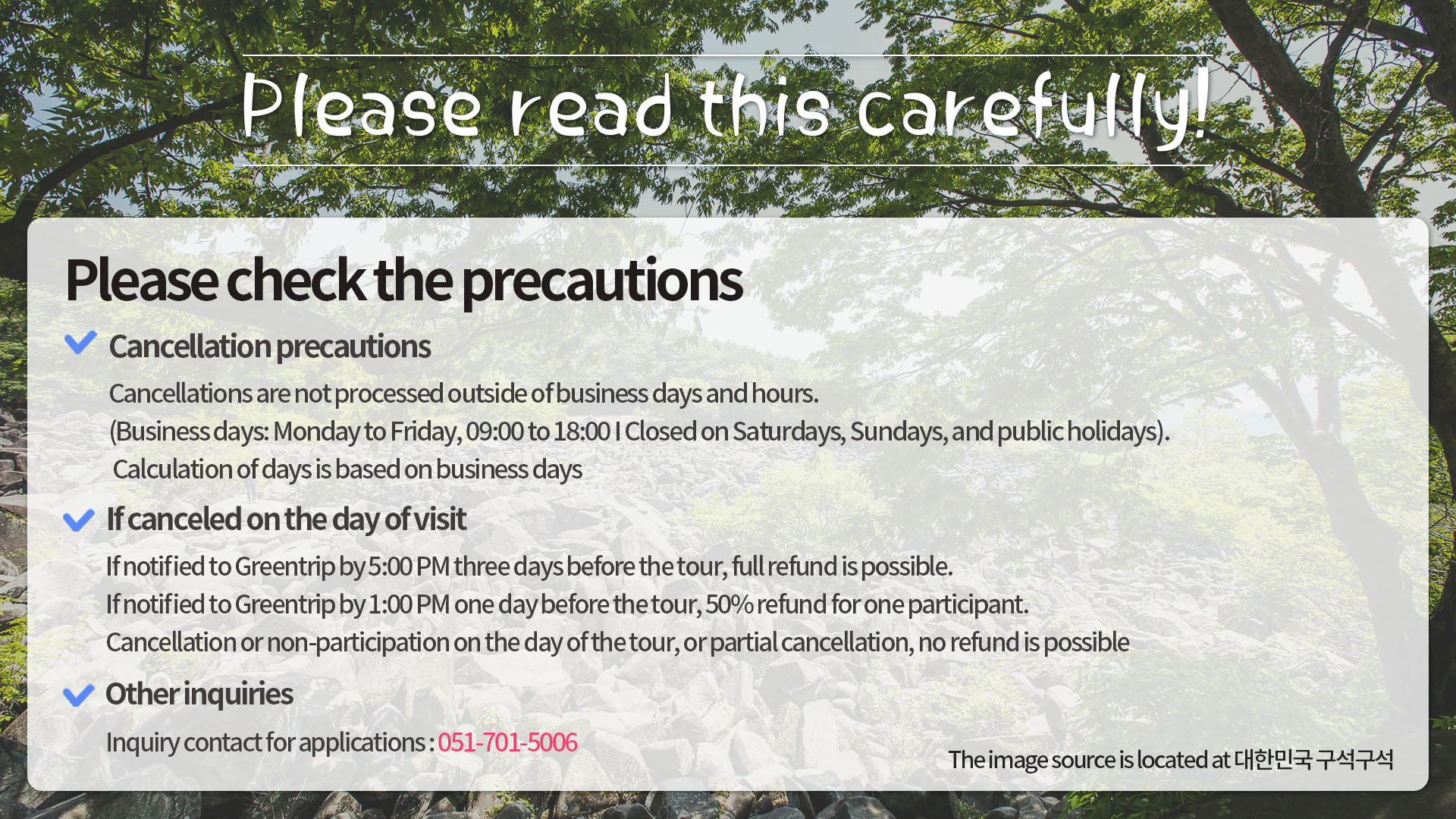Beautiful City, Miryang
♣ ★ Tour from Busan to Miryang ☆⊙
Tour for Foreigners Only
▪Departure: Busan Train Station
▪Operating Day: Tuesday, Thursday, Friday, Saturday, Sunday
▪People: minimum 2 people
▪Transportation: Bus
- Change according to the number of people
( 25-seater bus, 45- seater bus )
▪Tour Price: 59,000₩
* Included : Transportation, admission fees, activity, guides
(Lunch is not included)
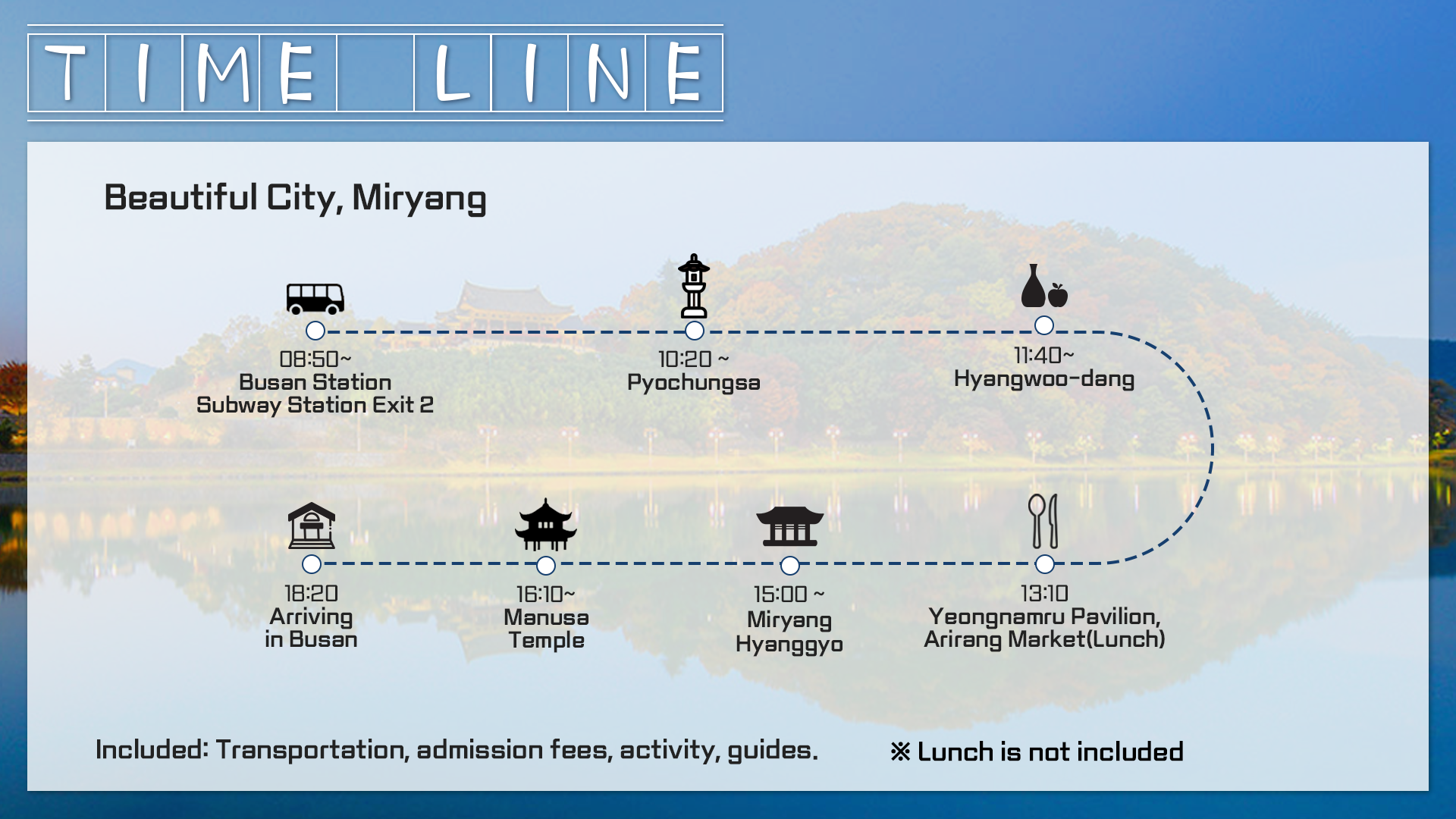
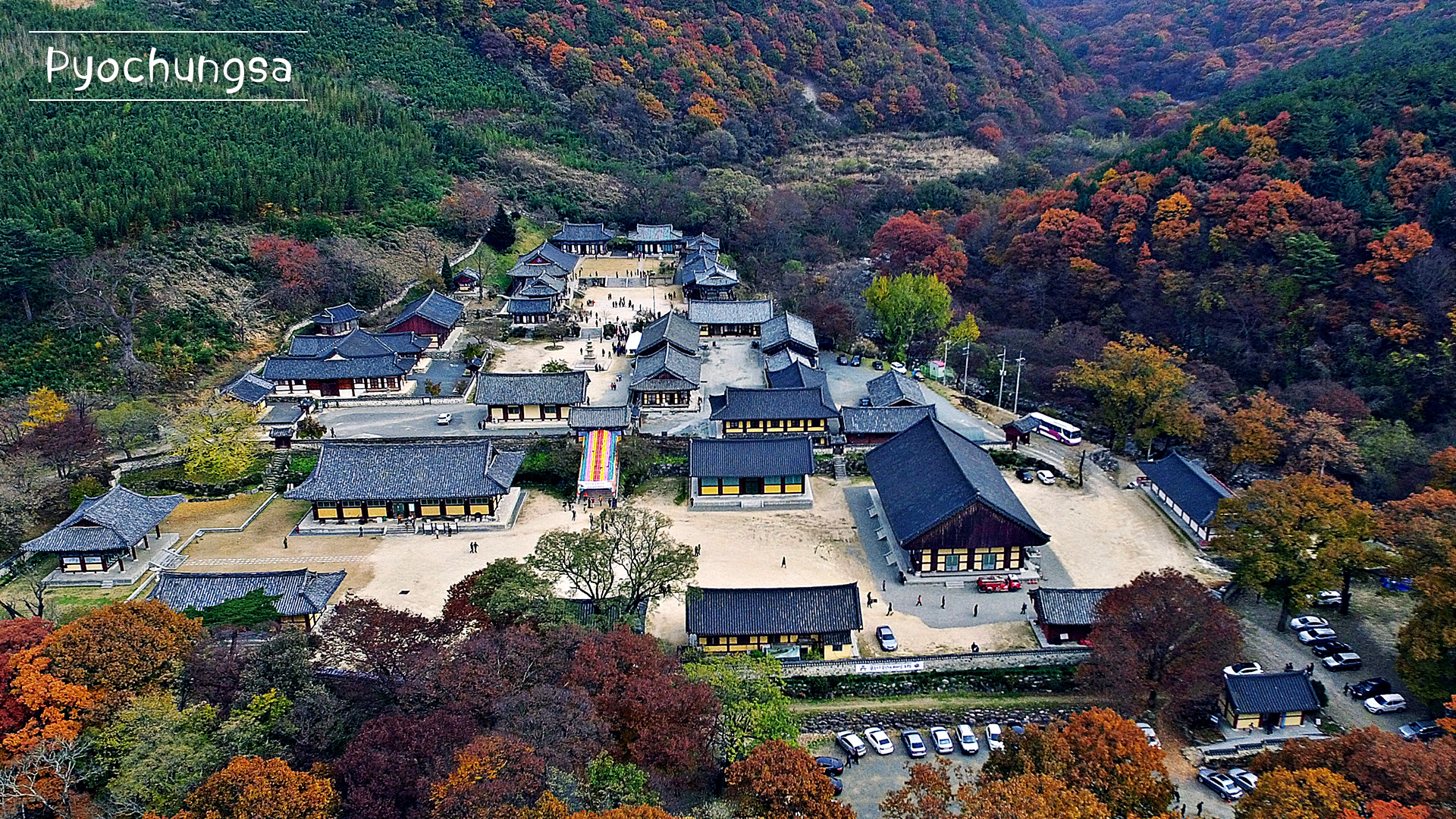
Pyochungsa Temple, designated as Gyeongsangnam-do Monument No. 17, honors Samyeong Dae-sa for his role in the Imjin War. Rebuilt after a fire in 1926, it houses National Treasure No. 75, Treasure No. 467, and around 300 relics related to Samyeong Dae-sa across 25 buildings.
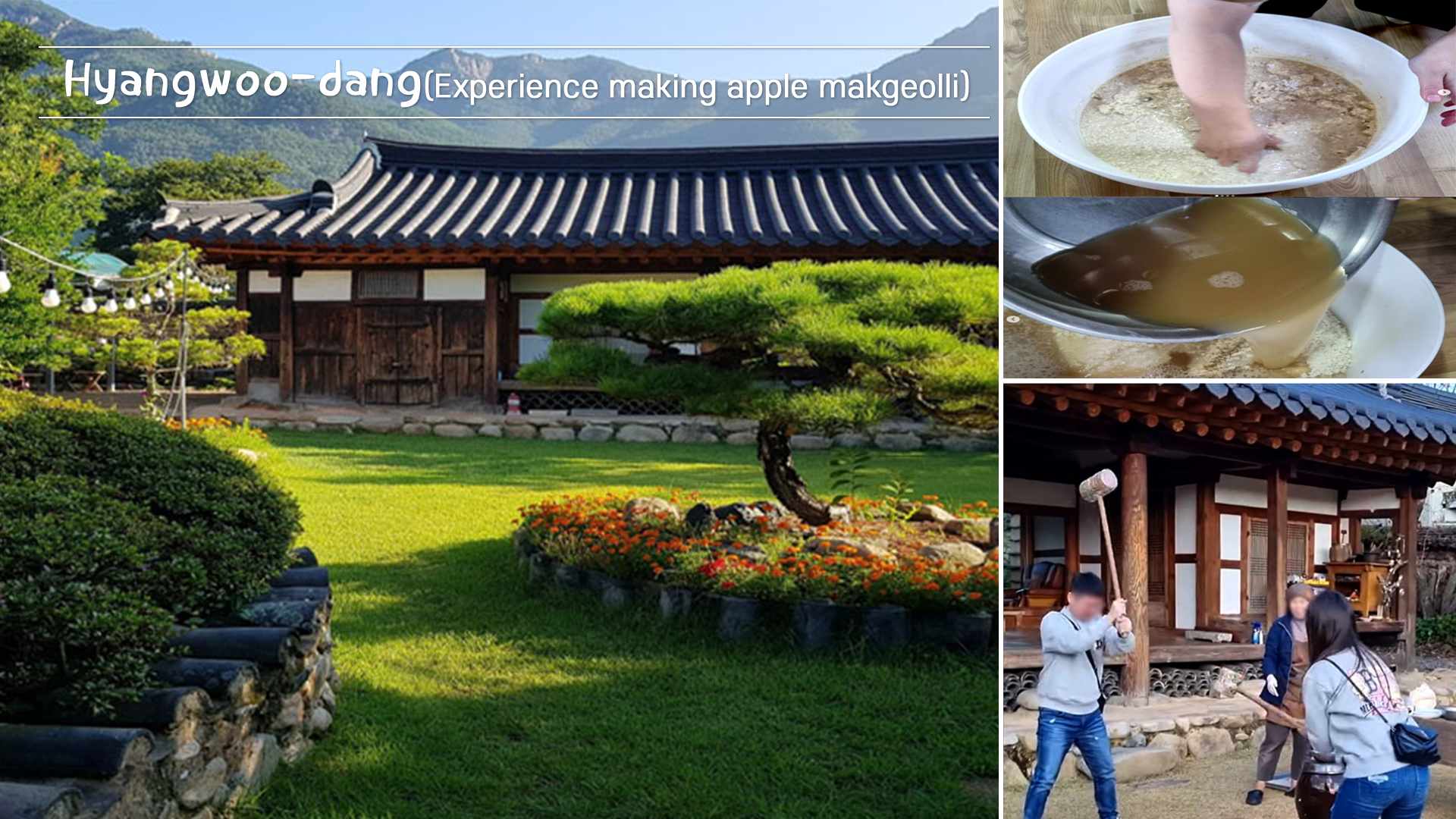
▪Experience making apple makgeolli in the Eoreumgol area of Miryang at a 120-year-old traditional Korean hanok. This beautifully preserved home offers an authentic setting where visitors can enjoy a variety of hands-on cultural activities, including natural dyeing and woodworking, all within a spacious garden.
It’s a perfect destination for families looking to relax and immerse themselves in the charm of traditional Korean culture.
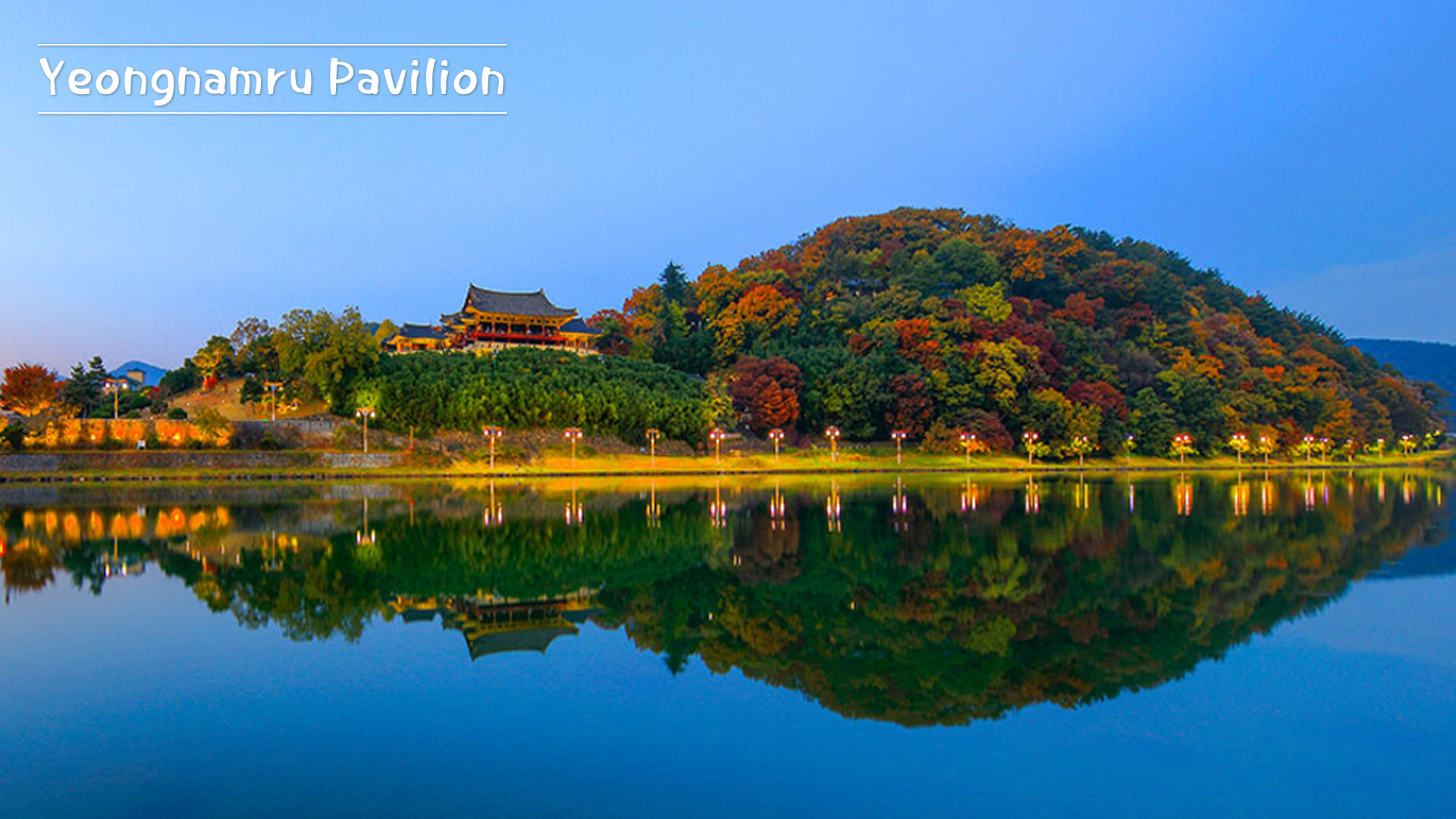
▪Yeongnamru Pavilion (Treasure No. 147) originated from a building attached to Yeongnamsa Temple, which was built in Silla Dynasty.
Since then, the pavilion was become a larger independent building. Yeongnamru Pavilion is one of the greatest wooden architecture from late Joseon Dynasty, with 5 blocks in the front, 4 blocks on the sides, and the second floor is made in a style called naewoejin. The magnificent style creates proud yet picturesque beauty, which place Yeongnamru Pavilion as one of the three greatest pavilions in Korea. It is located on th cliff over Miryang River. People look over the town from there or take a rest while they are walking along the river trail. The sights of clear and pristine Miryanggang River combine with the pavilion create a breathtaking beauty. The night scenery of the pavilion, reflected on the waters of the river, make it a supreme tourist attraction.
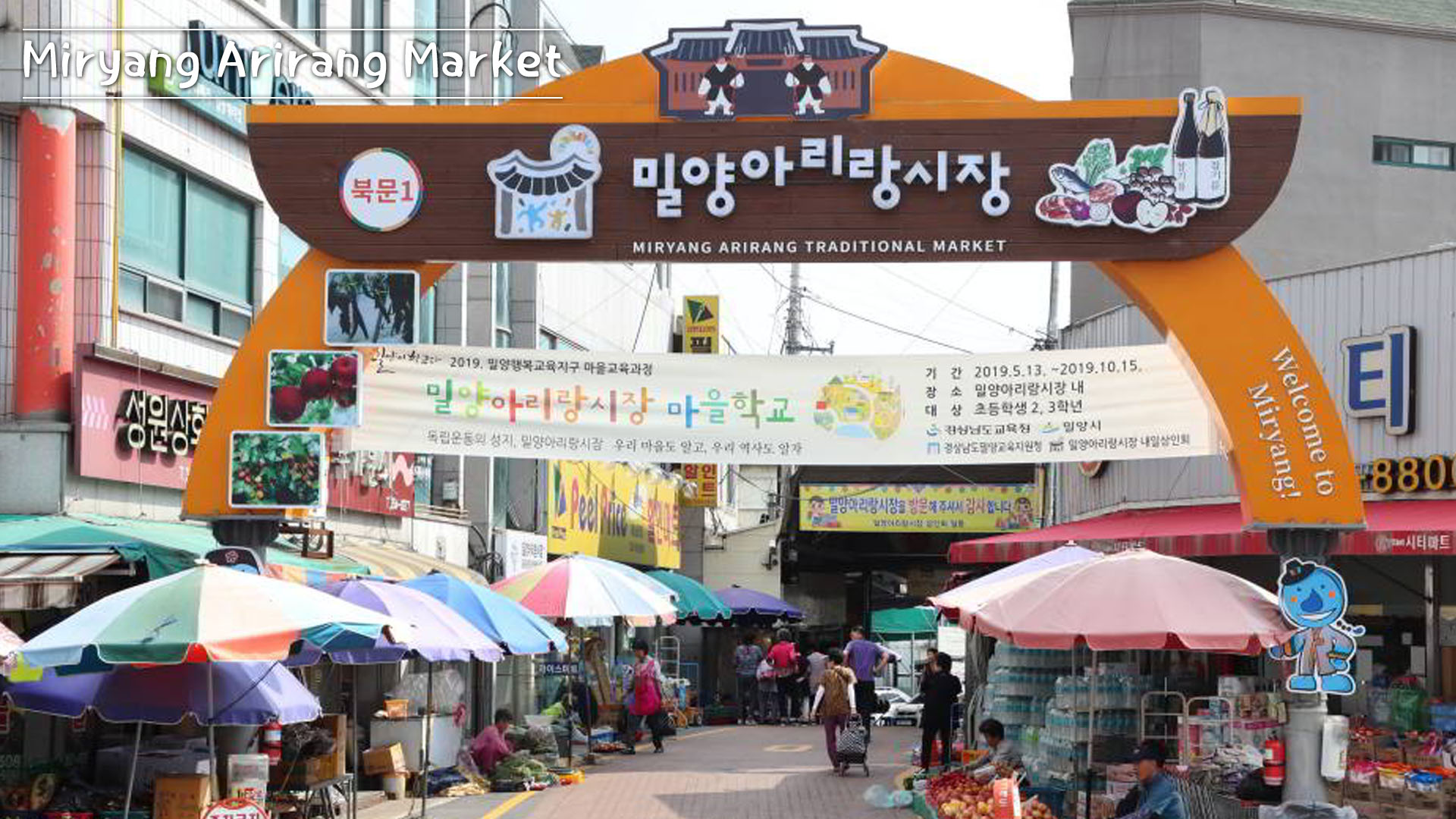
▪Miryang Arirang Market, which has been around since 479, is a traditional market that preserves the culture of small towns and rural areas as well as its long history. In 2017, Arirang Market and Naeil Traditional Market were merged to create Miryang Arirang Market. There are a variety of shops, from agricultural and marine products and household goods stores to restaurants such as pork soup, loach stew, and barley rice, providing a variety of things to see and eat to those who visit the traditional market.
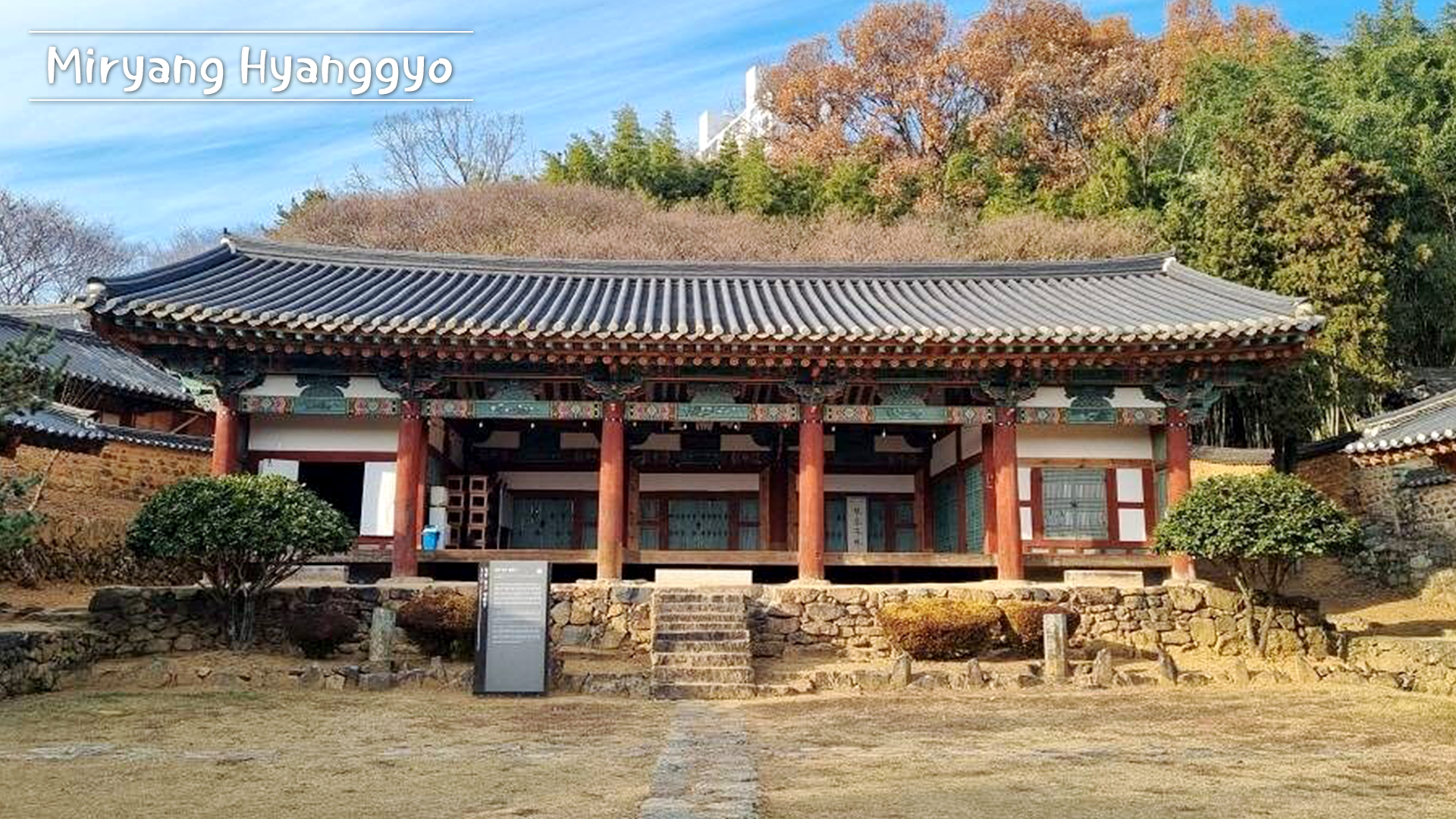
-Milyang Hyanggyo is a Confucian school founded around 1100 AD during the Joseon Dynasty. Rebuilt in its current location in 1602, it is located on a hillside behind a traditional village in Milyang. The site includes several historic buildings arranged symmetrically, with the main hall dedicated to Confucius and other Confucian sages. It served as a key center for education and Confucian rites.
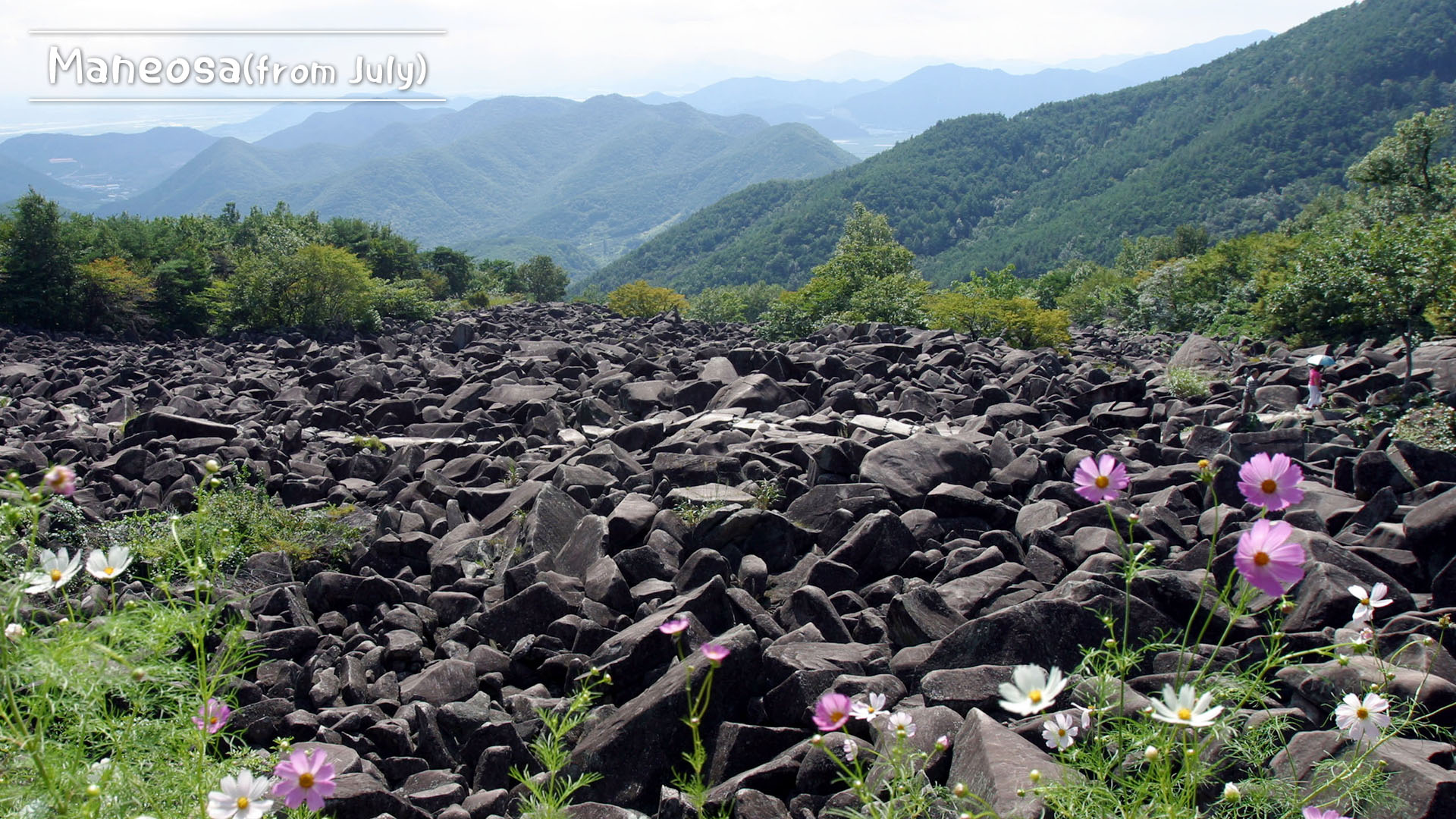
▪Maneosa is a temple located on the 8th ridge of Mt. Maneo, 674 meters above sea level. According to the Samguk Yusa, it was founded by King Suro of the ancient Gaya Kingdom in 1180 during the Goryeo Dynasty. The temple supports the theory of Buddhism’s southern transmission to Korea and has long been considered a sacred site, even used for rain rituals during droughts. Legend says King Suro tried to subdue evil spirits in the region, and with the help of Buddha’s teachings, transformed them. As a result, countless fish and dragons from the East Sea, moved by the Dharma, turned into stones that still remain today. These stones emit clear, bell-like sounds when struck, earning them the name “Jongseok” (bell stones). Mano-sa and its sacred stones are now designated cultural monuments of Gyeongsangnam-do Province.
